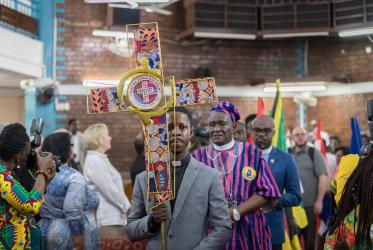In May and June 2021, the United Church of Canada invited congregations to a 3-part workshop entitled “The Church has left the building: how will we combine online and in-person church?“ More than 500 people joined in the workshop, expressing a common worry that leadership teams were tired out by the many new processes and procedures with which they were confronted.
All this happened while they face dwindling and aging church membership, which means fewer volunteers contributing to the life of the church.
In a summary of responses aggregated from 151 congregations from across Canada, many comments focused on the fact that older people were not able to participate in the life of the congregation.
To reach members, some churches used non-digital means of communication, including phone, mail, and over-the-fence visits.
Trinity United Church in Winnipeg set up a system whereby people could access the Sunday sermon by phone. Also, for pastoral care and general prayer practices, the phone was the dominant means of communication.
Comox United Church, located in a remote community on Vancouver Island, British Columbia (western Canada) used the opportunity of online communication tools to partner with Topsail United Church in Newfoundland. Church leaders found that enabling community among people living in remote areas of the country helped bridge the loneliness.
Linda Buchanan, lay preacher from Westminster United Church in The Pas, Manitoba illustrated her situation. The congregation has about 100 members. About 40-60 tune into the Sunday service when their wifi reception allows. Between 8-10 members are not able to join due to lack of broadband access or technical ability. "A small team printed the service or at least the sermon and mailed the documents,” explained Buchanan. "Also, especially senior members, when in need of pastoral care, preferred phone calls, instead of social media interaction.”
The United Church of Canada study also showed that congregations were able to connect with new and former members who were not able to join the in-person life of the congregation, for mobility or geographical reasons. Katja Brittain, one of the workshop’s organizers summarized: “For them, online communication meant a new lifeline to a community that they formerly had to give up.”
As Rev. Andria Irwin from Highland United Church in Vancouver, British Columbia explained: “A digital congregant who depends on physical distancing from other people finds meaning by actively contributing to the life of the worshipping community. S/he prepares the weekly prayer of the people among other tasks that can be done remotely.”
United Church of Canada leaders also said that the challenge for all of the congregations with new members will be how to integrate digital and non-digital versions of church life, without excluding one or the other, once the pandemic lockdown is over.
“Multisite-worship” is a solution that enables rural congregations with limited access to volunteers and technology resources to celebrate worship in a larger community. Multiple congregations are set up with one being the hub church and the others becoming satellite churches. Participating congregations access a fully interactive, live worship service.
“The technology is controlled in the hub—or host—church while the others operate a box with all the equipment fully configured,” explained Randy Boyd from Rural Connect. "Access to the internet is not required.”
If possible, each congregation gathers in their building to worship with a screen showing the entire service, she said. “With the use of a video camera, individual parts for the service are filmed and transmitted to the hub to then be included for all on everyone’s screen, and each congregation provides leadership for different parts of the service.” explained Boyd.” This setup also allows the congregation to livestream for those members who cannot join the service in-person.
Digital Symposium - Communication for Social Justice in a Digital Age
See more about "The Church has left the building"







